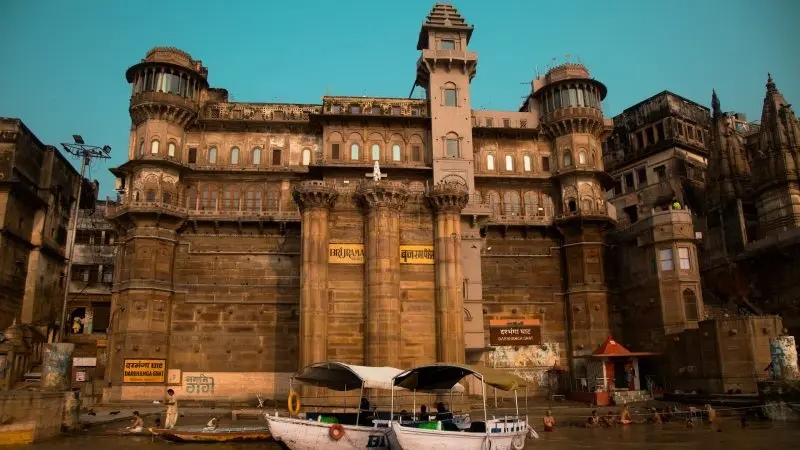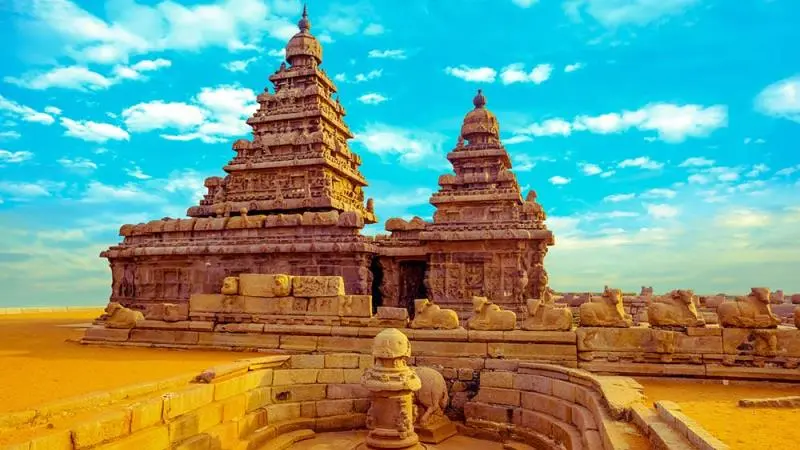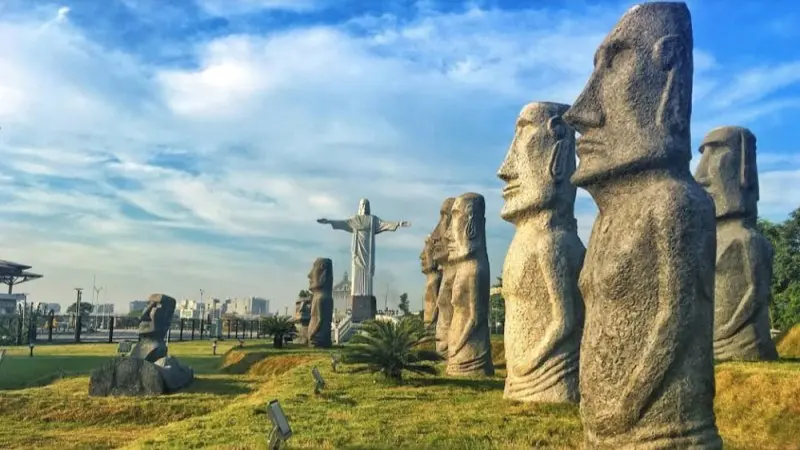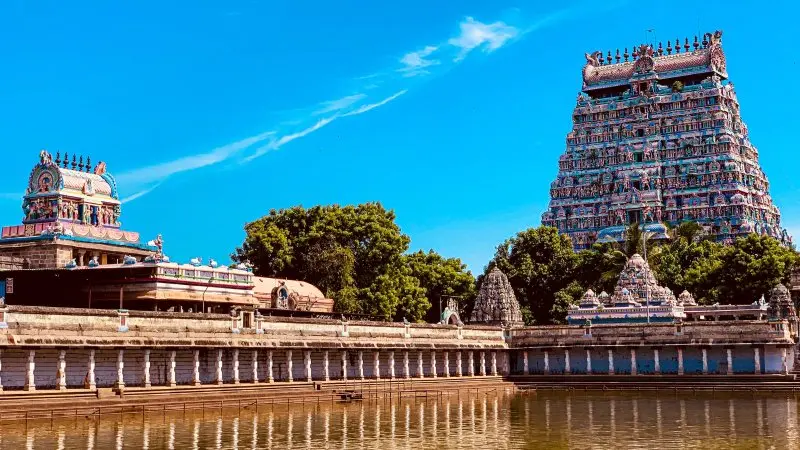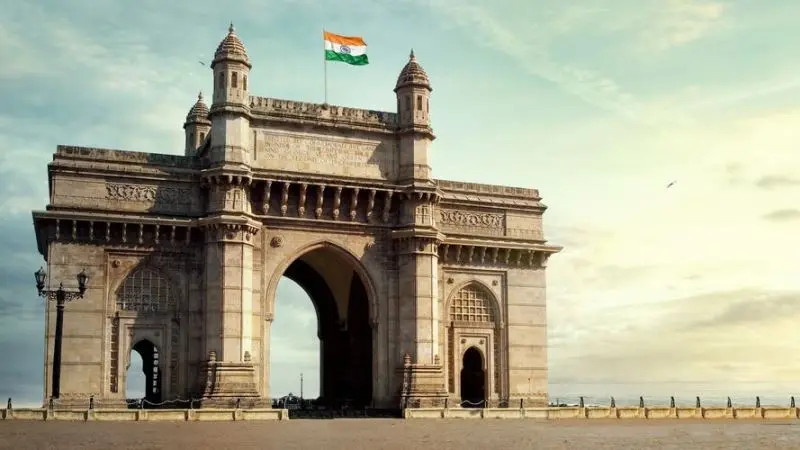| Entry Fee: 2.381 INR; Location: Check Map Address: Benares, Varanasi, Uttar Pradesh, India. |
Varanasi, also known as Kashi or Banaras, is one of the oldest and most sacred cities in India. Located on the banks of the holy River Ganges in the state of Uttar Pradesh, Varanasi holds immense religious, cultural, and spiritual significance. It is a city where ancient traditions and modern life coexist, creating a unique and vibrant atmosphere.
Varanasi is considered the spiritual capital of India, attracting pilgrims, seekers, and tourists from all over the world. The city’s history dates back thousands of years, and it is believed to be one of the oldest continuously inhabited cities in the world. Varanasi is steeped in mythology, with legends linking it to Lord Shiva, who is said to have established the city.
The city’s religious significance is deeply rooted in Hinduism, and it is regarded as one of the holiest places for Hindus. Varanasi is believed to be the abode of Lord Shiva and the center of the universe, where life and death converge. The rituals, ceremonies, and spiritual practices performed here hold great importance and are considered pathways to spiritual liberation.
Varanasi is not only a city of spirituality but also a center of learning, art, and culture. It has been a hub of knowledge and intellectual pursuits for centuries, attracting scholars, musicians, poets, and artists. The city is known for its classical music, dance, and handloom weaving, particularly the renowned Varanasi silk.
The History of Varanasi
Ancient History of Varanasi
Varanasi has a rich and ancient history that spans over several thousand years. It is believed to be one of the oldest continuously inhabited cities in the world. The city’s history can be traced back to the Vedic period, around 1500 BCE, making it an important center of civilization and learning since ancient times.
Spiritual and Religious Significance
Varanasi holds immense spiritual and religious significance in Hinduism, Buddhism, and Jainism. In Hindu mythology, it is considered the abode of Lord Shiva and Goddess Parvati. According to Hindu beliefs, taking a dip in the holy Ganges River in Varanasi can cleanse one’s sins and facilitate liberation from the cycle of birth and death.
Development of Varanasi as a Center of Learning and Culture
Varanasi has been a center of learning, culture, and spirituality for centuries. It has attracted scholars, philosophers, and artists who have contributed to its intellectual and cultural growth. The city has been an important seat of education and is renowned for its universities, colleges, and traditional schools of music, dance, and Sanskrit learning.
Varanasi became a significant center for Buddhism when Gautama Buddha delivered his first sermon at nearby Sarnath after attaining enlightenment. The teachings of Buddha had a profound influence on Varanasi and its spiritual landscape.
Throughout its history, Varanasi has witnessed the rise and fall of several empires, including the Mauryas, Guptas, and Mughals. The city has endured invasions, wars, and cultural transformations, yet it has remained a center of spiritual and cultural heritage, attracting devotees, pilgrims, and scholars from all walks of life.
Ghats of Varanasi
is famous for its ghats, which are stepped embankments along the sacred River Ganges. The ghats are integral to the religious and cultural fabric of the city and provide a unique and picturesque setting for various rituals, ceremonies, and activities.
Prominent Ghats and Their Significance
- Dashashwamedh Ghat:
- Located near the main Vishwanath Temple, Dashashwamedh Ghat is one of the oldest and most important ghats in Varanasi.
- It is believed that Lord Brahma performed a grand sacrifice (yajna) here, hence the name “Dashashwamedh” meaning “the place of ten horse sacrifices.”
- Every evening, a mesmerizing Ganga Aarti (prayer ceremony) takes place at Dashashwamedh Ghat, attracting a large number of devotees and tourists.
- Manikarnika Ghat:
- Manikarnika Ghat is one of the most sacred and significant ghats in Varanasi.
- It is the main cremation ghat, where Hindus believe that cremation on this holy site brings moksha (liberation from the cycle of life and death).
- The continuous cremation fires at Manikarnika Ghat are considered to be eternal flames.
- Assi Ghat:
- Located at the confluence of the Ganges and the Assi River, Assi Ghat is a popular and vibrant ghat.
- It is believed to be the spot where Lord Shiva, after slaying the demon Shumbha-Nishumbha, took a dip in the Assi River.
- Assi Ghat is a hub of cultural and spiritual activities, including yoga classes, boat rides, and religious rituals.
- Harishchandra Ghat:
- Harishchandra Ghat is associated with the legendary king Harishchandra, known for his unwavering truthfulness.
- It is primarily used for cremation rituals, especially for those who cannot afford the wood and rituals at Manikarnika Ghat.
- The ghat is also known for its connection to Hindu mythology and the story of Harishchandra’s noble sacrifice.
These are just a few of the prominent ghats in Varanasi. In total, there are more than 80 ghats along the Ganges, each with its own significance, rituals, and stories. The ghats provide a unique window into the spiritual and cultural essence of Varanasi, offering visitors an opportunity to witness and participate in age-old traditions and ceremonies.
Temples and Sacred Sites
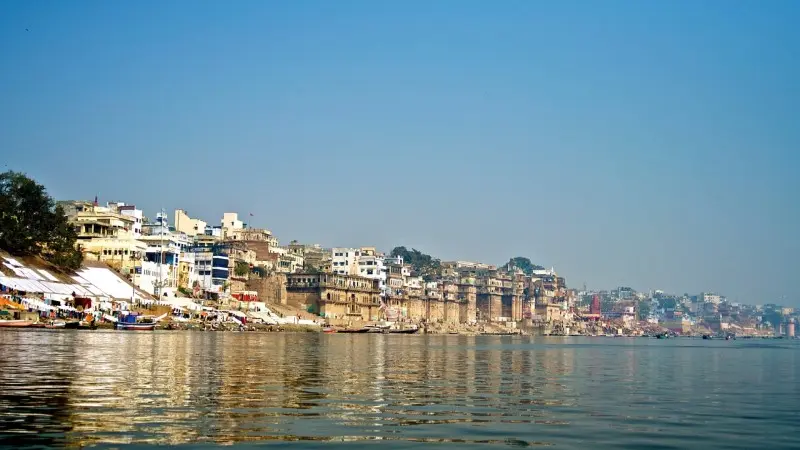
Varanasi is home to numerous temples and sacred sites that hold immense religious and cultural significance. These places of worship are not only architectural marvels but also serve as important pilgrimage sites for devotees from all over the world.
Kashi Vishwanath Temple:
- The Kashi Vishwanath Temple, dedicated to Lord Shiva, is one of the most important and revered temples in Varanasi.
- It is believed to be the holiest of all Shiva temples and holds a prominent place in Hindu mythology and religious practices.
- The temple complex underwent several reconstructions throughout history and showcases intricate architecture and craftsmanship.
Sankat Mochan Hanuman Temple:
- The Sankat Mochan Hanuman Temple is dedicated to Lord Hanuman, the monkey god and a devoted disciple of Lord Rama.
- The temple is believed to have been established by the renowned saint, Tulsidas, who wrote the epic Ramcharitmanas.
- It is one of the most popular and revered Hanuman temples, attracting a large number of devotees seeking blessings and protection.
Durga Temple:
- The Durga Temple, also known as the Monkey Temple, is dedicated to Goddess Durga.
- The temple is known for its vibrant red color and exquisite architecture, with intricate stone carvings depicting various gods and goddesses.
- It is believed that visiting the temple and seeking the blessings of Goddess Durga brings protection, strength, and fulfillment of desires.
Tulsi Manas Temple:
- The Tulsi Manas Temple is dedicated to Lord Rama and is located at the spot where the saint poet Tulsidas composed the Ramcharitmanas, an epic poem narrating the story of Lord Rama.
- The temple’s walls are adorned with verses from the Ramcharitmanas, beautifully carved in marble.
- The serene ambiance of the temple and the divine presence of Lord Rama attract devotees and spiritual seekers.
Apart from these prominent temples, Varanasi is dotted with numerous small and big shrines dedicated to various deities. Exploring the temples and sacred sites of Varanasi offers a glimpse into the rich religious heritage and devotion that permeates the city. It provides an opportunity for spiritual introspection, cultural immersion, and a deep connection with the divine.
Cultural and Spiritual Practices
Varanasi is a city where spirituality and cultural traditions intertwine. It is a place where ancient rituals, ceremonies, and practices have been carried out for centuries, providing visitors with a unique and enriching cultural experience. Here are some of the cultural and spiritual practices that make Varanasi truly special:
Rituals and Ceremonies along the Ghats
- Ganga Aarti: One of the most significant and awe-inspiring rituals in Varanasi is the Ganga Aarti, performed every evening at the ghats. Devotees gather to witness the beautifully choreographed ceremony, where priests offer prayers, light oil lamps, and chant hymns in praise of the River Ganges.
- Morning Rituals: Early mornings in Varanasi witness a myriad of spiritual practices. Devotees perform ablutions and offer prayers to the rising sun, seeking blessings for the day ahead. Many also engage in yoga, meditation, and chanting sessions along the ghats, embracing the tranquil and spiritual atmosphere.
Boat Rides and Sunrise/Sunset Views on the Ganges
Exploring the Ganges River through boat rides is a quintessential Varanasi experience. As the sun rises or sets, the river comes alive with devotees taking holy dips and performing rituals. Witnessing the golden hues of sunrise or the serene beauty of sunset from a boat on the Ganges is a mesmerizing experience that connects you with the spiritual essence of Varanasi.
Yoga and Meditation Centers
Varanasi is a hub for spiritual seekers and yoga enthusiasts. Several ashrams and centers offer yoga and meditation classes, providing a serene environment for self-reflection and rejuvenation. Participating in these practices allows you to delve deeper into your spiritual journey and find inner peace amidst the city’s bustling energy.
Sacred Bathing and Rituals
The Ganges River holds great importance in Hinduism, and taking a dip in its sacred waters is believed to cleanse one’s sins and facilitate spiritual purification. Devotees and pilgrims flock to the ghats to perform various rituals, including offering prayers, lighting incense sticks, and floating flower offerings (known as “diyas”) on the river.
Varanasi Music and Dance
Varanasi has a rich cultural heritage of classical music and dance. The city has been a nurturing ground for renowned musicians and dancers. Attending classical music and dance performances, known as “Sangeet” and “Nritya,” is a cultural treat that allows you to immerse yourself in the soulful melodies and graceful movements of Indian classical arts.
Engaging in these cultural and spiritual practices provides a deeper understanding of Varanasi’s spiritual ethos and offers an opportunity for self-reflection, introspection, and connection with the divine. Whether you choose to witness the Ganga Aarti, embark on a boat ride, practice yoga, or immerse yourself in the captivating music and dance performances, Varanasi offers a transformative experience that nourishes the soul.
Varanasi’s Cultural Festivals
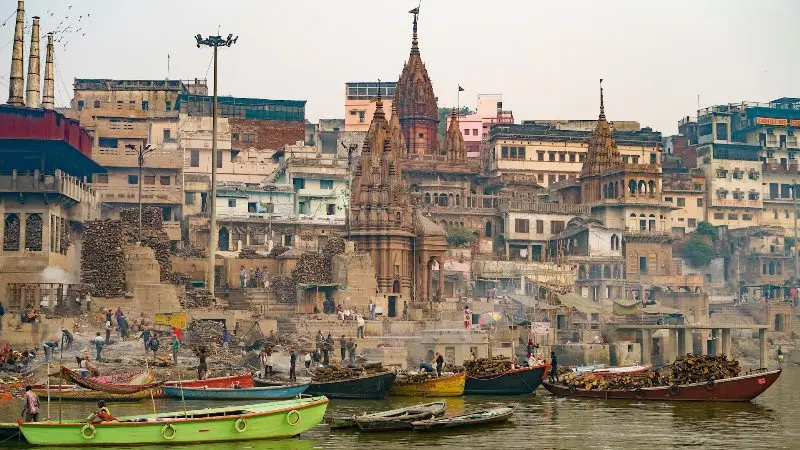
Varanasi is a city of vibrant festivals and celebrations that showcase the rich cultural tapestry and religious fervor of the region. Throughout the year, the city comes alive with colorful processions, devotional music, lively dances, and traditional rituals. Here are some of the notable cultural festivals celebrated in Varanasi:
Dev Deepawali: The Festival of Lights
- Dev Deepawali, also known as Kartik Purnima, is a grand festival celebrated on the full moon day of the Hindu month of Kartik (usually in November).
- The festival marks the homecoming of the Hindu deities after their temporary stay in the mortal world during Diwali.
- Varanasi is beautifully decorated with thousands of diyas (oil lamps) that illuminate the ghats and temples, creating a mesmerizing sight.
- Devotees gather on the ghats to offer prayers, perform rituals, and witness the grand Ganga Aarti, which is even more spectacular on this auspicious day.
Maha Shivaratri: Celebrating Lord Shiva
- Maha Shivaratri is a significant festival dedicated to Lord Shiva, observed on the 14th night of the Hindu month of Phalgun (usually in February or March).
- Devotees throng the temples of Varanasi, especially the Kashi Vishwanath Temple, to offer prayers and seek blessings from Lord Shiva.
- The city witnesses processions, devotional singing, and the chanting of mantras throughout the night, creating an atmosphere charged with spirituality.
Ganga Mahotsav: A Celebration of the Ganges River
- Ganga Mahotsav is a ten-day cultural festival held annually in Varanasi, showcasing the city’s rich heritage and love for the Ganges River.
- The festival features various cultural performances, including classical music and dance concerts, folk dances, theater shows, and art exhibitions.
- Boat races and religious processions are held on the Ganges, and the ghats are adorned with lights and decorations.
- Ganga Mahotsav attracts artists, performers, and tourists from around the world, providing a platform to experience the diverse cultural traditions of Varanasi.
These festivals offer a glimpse into the vibrant cultural fabric of Varanasi and provide an opportunity to witness the city at its most joyous and colorful moments. By participating in these celebrations, visitors can immerse themselves in the cultural heritage, devotion, and festive spirit that define the essence of Varanasi.
Places To Visit Near Varanasi
Varanasi, with its rich history and cultural significance, is surrounded by several attractions that offer additional experiences and insights into the region’s heritage. Here are some noteworthy nearby attractions to explore:
1. Sarnath: The Place of Buddha’s First Sermon
Located just a few kilometers from Varanasi, Sarnath is an important pilgrimage site for Buddhists. It is the place where Gautama Buddha delivered his first sermon after attaining enlightenment.
Sarnath houses several ancient Buddhist structures, including the Dhamek Stupa, the Ashoka Pillar, and the Mulagandhakuti Vihara. Visitors can explore the archaeological ruins, visit the Buddhist temples and monasteries, and soak in the peaceful ambiance of this spiritual site.
2. Ramnagar Fort: A Historical Fort and Museum
Situated on the opposite bank of the Ganges River, the Ramnagar Fort is a magnificent structure built in the 18th century. It served as the residence of the Maharaja of Varanasi and showcases a fusion of Mughal and Indian architectural styles.
The fort houses a museum that exhibits a collection of vintage cars, antique weaponry, royal artifacts, and historical manuscripts. Visitors can also witness the grand Ramnagar Ramlila, a dramatic reenactment of the Hindu epic Ramayana, which takes place during the festival of Dussehra.
3. Chunar Fort: An Ancient Hilltop Fort
Located around 40 kilometers from Varanasi, Chunar Fort is an ancient hilltop fortress with a history dating back to the 11th century. The fort offers panoramic views of the Ganges River and the surrounding landscape.
It is renowned for its remarkable architecture, stone carvings, and historical significance, having witnessed the reign of various dynasties. Exploring Chunar Fort allows visitors to delve into the region’s history and experience the grandeur of a bygone era.
Conclusion
Varanasi, with its spiritual essence, cultural vibrancy, and historical significance, offers a unique and transformative experience to visitors. From the sacred ghats along the Ganges River to the magnificent temples, the city’s rich heritage and traditions create an atmosphere of deep reverence and spiritual introspection.
Come, experience the magic of Varanasi, where spirituality, culture, and history merge to create an unforgettable tapestry of the soul.

